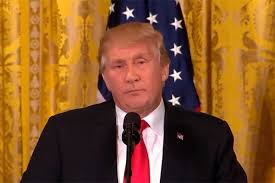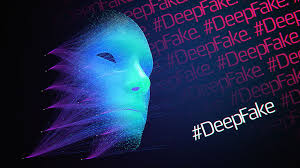This is the age of artificial intelligence. It is being used in every field, both negatively and positively. There is a type of AI that makes it a lot easy to create a fake video or audio of any person in the world today . This technology is being used a lot nowadays. A campaign can be launched against any personality. We are talking about Deep Fake Technology. In today's article, we will talk about the it and try to know what it actually is and how it works. So let's begin.
The phrase "Deep Fake" is derived from the underlying AI-based "deep learning" technology. Media that feels so true to life that it's difficult to distinguish is produced using deep learning algorithms, which, given enough data, educate themselves how to solve problems. Additionally, it is utilised to alter faces in digital and video content to produce bogus media.
Deep Fakes can be made in a variety of methods. But the most popular approach makes use of deep neural networks with autoencoders. It employs a face-shifting method. You'll need the subject's face and the video clip in which you wish to use it in order to make a false video of any individual.
Videos may have no connection at all. The objective can be a Hollywood movie clip, and the videos of the subject you wish to feature in the film can be arbitrary YouTube clips.
In order to map a person to the target video by looking for shared traits, Auto Encoder analyses video clips to determine how that person appears from various angles and environments.
Generative adversarial networks (GANs), a different type of machine learning, are added to the mix, and they find and fix any defects in the deepfake across several rounds, increasing the deepfake's accuracy. They become challenging for detectors to interpret. To put it simply, it becomes the hardest to catch.
Even a novice may simply construct a deepfake video thanks to a number of applications and pieces of software. Like the Chinese photo editing app (Zao, DeepFaceLab, FaceApp), which has AI techniques embedded right in.
Github's On Github, a community for open source software development, there is a significant amount of deepfake software. While there is a considerable risk of abuse, some of these apps are used just for amusement, which is why deepfake creation is allowed.
How did Deep Fake start and who created it?
When a user on Reddit named "Deepfake" stated on that he had created a machine learning (ML) system that flawlessly replicates celebrity faces in videos, this was the time when people first became aware of deepfake technology. Obviously, they offered samples, and it quickly gained a lot of popularity. It had to be shut down by site administrators, but by that time the technology was well-known and readily available. It was soon being used to make fake videos, primarily of politicians and actors.
Is Deep Fakes limited to videos?
Not all deepfakes are found in video content. There are a tonne of uses for deepfake audio, which is a topic that is expanding quickly.

With only a few hours (or in some cases, minutes) of audio from the person whose voice is being cloned, realistic audio deep fakes can now be constructed using deep learning algorithms, and once the model is established, a voice duplicate of the person may be created. similar to how fraud was committed last year using fake audio of a CEO.
What Dangers Lurk In The Use of Deep Fake Technology?
Using deep fake videos currently sounds intriguing and enjoyable. However, there seems to be profound fake technology under the funny technology that has the potential to become deadly in the near future.
The ability to discriminate between genuine and phoney videos will grow increasingly challenging as deepfake technology develops. Particularly in the case of famous people and prominent figures, this could have disastrous effects. Both people's lives and jobs may be in danger. Even wicked deep fakes have the power to severely devastate people's life. They can be used by malicious individuals to pose as others and take advantage of their friends, family, and coworkers. They have the ability to ignite worldwide events and even wars using false videos of world leaders.

But creating such videos is not a novel concept. Some universities were already pursuing sizable academic computer vision research in the 1990s. During this time, a lot of work was put into using machine learning and artificial intelligence (AI) to edit previously recorded video of people speaking and merge it with additional audio tracks. This technology was shown by the 1997 Video Rewrite Program.
Numerous experts predict that as technology develops, deepfakes will become more sophisticated and could endanger the public by interfering with elections, escalating political tensions, and engaging in greater criminal behaviour.
Politicians have also employed deepfake video. For instance, a Belgian political party broadcast a video of Donald Trump's address urging Belgium to leave the Paris climate accord in 2018. That speech was a deep fabrication that Trump never delivered. Deepfake has already been used to produce deceptive videos. Political analysts are also preparing for a future wave of fake news that undoubtedly includes realistic deepfakes.
Conclusion
Deepfakes became a common topic of conversation. The majority of internet users are familiar with deep fakes. Like in the past, we no longer have to wait years to obtain and use new technology.
Deep Fakes have both useful and harmful aspects, but it is up to us whether we use the technology well or poorly. It should be put to better use. A few legal arrangements must also be made in addition to this.
In actuality, it will take some time for them all to get at a particular stage. We'll have to wait and see what kind of world this technology creates.

